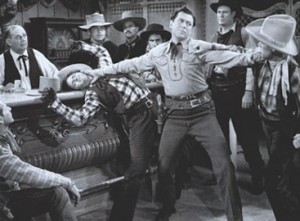Writing an action scene isn’t as easy as it sounds sometimes. Take the fight scene, for example.
It’s not enough to write “He punched the man in the face.” Your readers need to know specifics if they’re going to imagine the scene properly.
Here are some things you might want to keep in mind when writing those scenes:
- What type of punches are thrown?
- What types of holds are used?
- What types of throws are used?
- What type of weapons are used?
- What type of ammunition is used in the weapons?
- What does it feel like to throw a punch?
- What does it feel like to take one?
- What does it feel like to wrestle?
- What does it feel like to fire a weapon?
- What are the emotions your characters would feel during the fight?
- What are the sounds they might hear?
- What scents might be present during a fight?
This is also the time you want to do your research. Trust me, while some of your readers won’t know that a Glock pistol doesn’t have a safety catch, there are plenty of gun enthusiasts who will – and they’ll be turned off by your lack of research if you give your character a Glock with a safety catch. Find out all about boxing or whatever martial arts your character may know. Learn the names of some of the wrestling moves your character might use. Look up that firearm and learn its capabilities. If you’ve never been in a fight, consider going to a boxing match or martial arts tournament so you can see the nitty-gritty of what’s going on.
Good actions scenes can be tricky. You want to show enough of the action to give a vivid image, but not get bogged down in description.
To start with, you want to have the whole scene mapped out, as if you were doing a story board for a movie. Write the action out onto index cards — or use Scrivener — and arrange them in order so that you can see how it’s going to play out. If you have any artistic talent (or even if you don’t), you might also try drawing the action on one side of the cards, just like a story board. The idea is to be able to visualize the scene completely.
Once you have the entire sequence of action plotted out, and can see everything inside your head, you can start writing. Start right at the beginning of the action sequence. Keep your sentences short and tense. Give just enough description to set the stage, but then go straight into the action.
Another thing to include is emotion. You want the readers to see how the characters are feeling during the action scene. Add in the character’s emotional reaction to whatever just happened. Show their feelings in response to what’s going on around them. This not only makes the characters more real, but it also adds tension to the action.
Following these guidelines will result in tighter, more tense action scenes. Give it a shot yourself.

